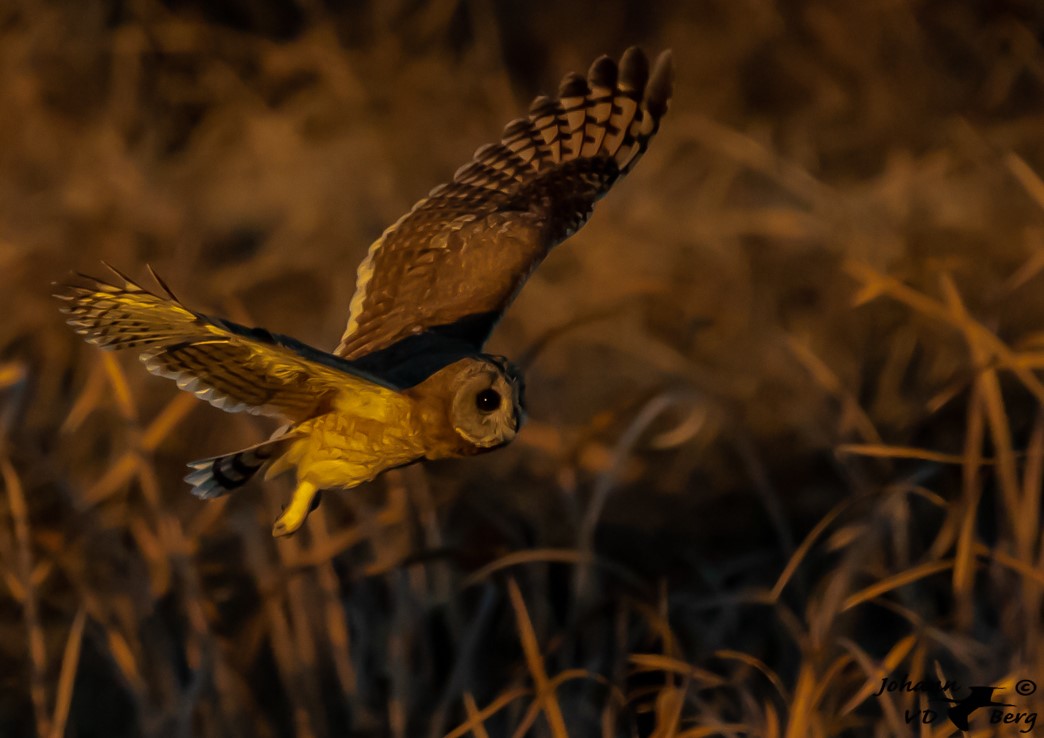|
JOIN OUR MAILING LIST |
We have some very exciting news. By all indications, the first chick hatched on 17 June, and we have photographic evidence that a second chick hatched four days later. As the photographs were taken at such a distance, they are not publishable, but we were able to discern the two chicks on a highly zoomed in photo. As is the norm, the Cain and Able scenario took place, and a few days later we could only see one chick left on the nest.
The chick is doing well despite the very cold spell we have had, and we are thrilled to publish the first photograph taken by Garth.
My Raptor of the month is the Marsh Owl.
I have developed this absolute fascination with the owls of Southern Africa, and in my quest to photograph them, I realized that I had to do some travelling to find them in their natural habitat.
Some trips have been successful, other not so. Some trips required going for a second time, and I am happy to say that my second trip to Zibulo Colliery near Devon/Ogies, paid off.
When you are hunting down a bird, it is of vital importance to understand their habitat, and in this case, it made so much sense to visit the open grassland of the Mpumalanga escarpment.
Marsh Owls roosts/nests on the ground, amongst the grass. They do not need trees. As the sun starts to set, they will pop out of the grass, fly low over the grass, and with their keen sense of hearing, find that juicy rat or mouse to complement their dinner.
They are gregarious, and you might find several birds concentrated in a small area of grassland, although I did witness a little tussle between two of them trying to share the same fence pole.
During my research, I learnt that the Grass Owl only fly at night, so it is going to be a challenge to get a photo of them.






